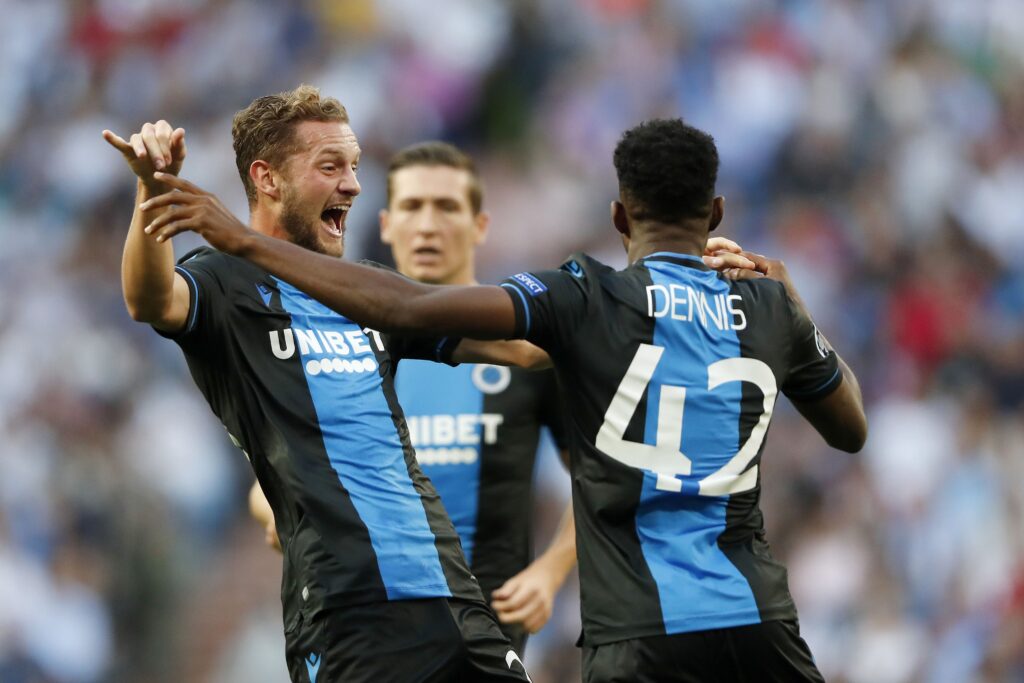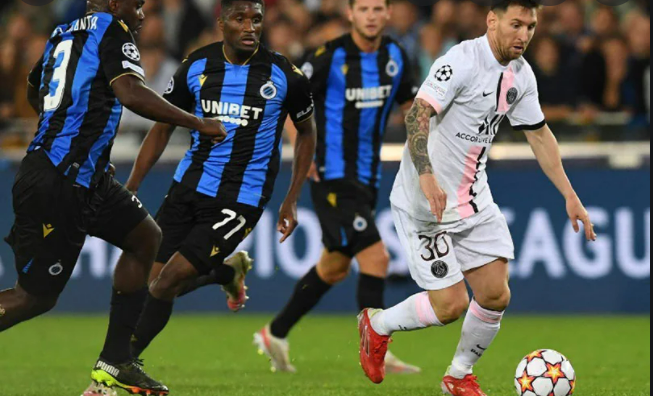AC Milan and Club Brugge are two historic clubs in European football, both with rich legacies, but their paths haven’t crossed often in UEFA competitions. With AC Milan being one of Italy’s most successful clubs and Club Brugge a dominant force in Belgian football, the anticipation surrounding any potential face-off is substantial. This article will explore the history of both clubs, their playing styles, and what to expect if Milan vs Club Brugge were to meet in a competitive fixture.
AC Milan: A Legacy of Success
Founded in 1899, AC Milan is one of the most decorated football clubs in history. Known for its signature red and black stripes, Milan has enjoyed both domestic and international success. With seven UEFA Champions League titles, 19 Serie A titles, and multiple Italian Cups, Milan is synonymous with European football dominance. Some of the greatest players in football history, such as Paolo Maldini, Franco Baresi, Kaka, and Andriy Shevchenko, have graced the San Siro, Milan’s iconic home stadium.
Under the guidance of legends like Arrigo Sacchi and Carlo Ancelotti, AC Milan revolutionized football with their tactical innovations. Sacchi’s Milan of the late 1980s was renowned for its high-pressing game, while Ancelotti’s teams in the early 2000s exemplified the club’s fluid, possession-based football. In recent years, under the leadership of Stefano Pioli, Milan has focused on a balance between youthful exuberance and experienced leadership, claiming the Serie A title in the 2021-2022 season.
Milan’s current squad includes talented players like Rafael Leão, Olivier Giroud, and Theo Hernandez, all of whom play pivotal roles in ensuring Milan’s domestic and European aspirations remain strong. With an emphasis on fast, attacking football and a sturdy defense, Milan has the tools to compete against any top European club.
Read Also: milan vs club brugge
Club Brugge: Belgium’s Finest
Club Brugge, often regarded as Belgium’s premier football club, was founded in 1891. With 18 Belgian Pro League titles and multiple domestic cup victories, the club has been a dominant force in Belgian football. Club Brugge has also enjoyed considerable success in European competitions, having reached the UEFA Champions League final in 1978, though they lost to Liverpool.
The club is well-known for its passionate fanbase and home ground, the Jan Breydel Stadium, which creates a daunting atmosphere for visiting teams. Club Brugge’s footballing philosophy centers on fast-paced, counter-attacking play, utilizing the talents of young, dynamic players. Over the years, they have developed a reputation for producing top-quality Belgian talent, as well as shrewd recruitment of international players.
In recent times, Club Brugge has been a consistent presence in the UEFA Champions League group stages. The team has surprised many European giants, often exceeding expectations with its ability to challenge bigger teams. Notable players such as Charles De Ketelaere, Noa Lang, and Hans Vanaken have been key figures in the club’s recent success. Their versatility and attacking prowess make Brugge a difficult opponent for any European team.

AC Milan vs Club Brugge: A Hypothetical Match-Up
While AC Milan and Club Brugge have not faced each other frequently in official European matches, a match between these two clubs would be an exciting spectacle. Both teams have different playing styles that could create an intriguing tactical battle.
Milan’s approach would likely focus on maintaining possession and dictating the tempo of the game. With players like Sandro Tonali (before his departure), Theo Hernandez, and Rafael Leão, Milan excels in transitioning quickly from defense to attack, exploiting spaces left by the opposition. Their defensive solidity, anchored by players like Fikayo Tomori and the experienced goalkeeper Mike Maignan, ensures that they can handle high-pressing teams like Club Brugge.
On the other hand, Club Brugge’s quick counter-attacking football would test Milan’s defense. Brugge’s pace on the flanks, with players like Noa Lang and their midfield engine led by Hans Vanaken, could pose a significant threat. Brugge’s ability to absorb pressure and hit teams on the break would make them a challenging opponent for Milan, especially in a two-legged European tie where away goals could be crucial.
Key Battles on the Field
- Theo Hernandez vs Noa Lang: This battle on the left side of the pitch could be the deciding factor in the game. Hernandez is known for his marauding runs from the left-back position, creating overlaps and delivering dangerous crosses into the box. However, he would also need to be wary of Noa Lang, whose speed and dribbling ability make him a constant threat on the counter-attack. Whichever player gains the upper hand in this duel could significantly influence the outcome.
- Rafael Leão vs Brugge’s Defense: Milan’s Portuguese winger Rafael Leão has been a revelation in recent seasons. His pace, dribbling, and ability to take on defenders one-on-one make him a nightmare for any defense. Club Brugge’s backline, likely marshaled by Simon Deli or Brandon Mechele, would need to stay disciplined and avoid giving Leão too much space, as he can create and score goals from seemingly impossible situations.
- Midfield Control: The midfield battle between Milan’s creative outlets like Rade Krunić or Tijjani Reijnders and Brugge’s industrious midfield duo of Vanaken and Mats Rits would be crucial. Whoever controls the midfield could dictate the flow of the game, with Milan looking to dominate possession and Brugge aiming to disrupt their rhythm and launch quick counters.
Read Also: milan vs club brugge
Tactics and Strategy
Milan would likely adopt a 4-2-3-1 or 4-3-3 formation, which has been favored by Stefano Pioli in recent seasons. This setup allows Milan to balance their attack and defense, with the two central midfielders providing cover for the back four, while the wide players push forward in attack. The presence of a target man like Olivier Giroud would give Milan the option to play crosses into the box, while their wide players, including Rafael Leão and Christian Pulisic, would stretch Brugge’s defense.
Club Brugge, under their current manager, tends to play with a 3-5-2 or 4-3-3 formation, relying on their wing-backs or wingers to create width and attacking opportunities. In matches against stronger opponents, Brugge might adopt a more defensive approach, packing the midfield and looking to break quickly on the counter. With their fast, mobile attackers, Brugge would aim to exploit any space left behind by Milan’s full-backs when they push forward.
European Pedigree
AC Milan’s seven European titles speak for themselves, but Club Brugge also has a respectable European history, reaching the final of the European Cup (now Champions League) in 1978. While Milan is a perennial contender in European competitions, Brugge has consistently punched above its weight, causing upsets against bigger clubs. This history of performing well against top teams would make them a dangerous opponent for Milan.

Conclusion
A match between AC Milan and Club Brugge would be a fascinating encounter between two clubs with differing footballing philosophies but a shared passion for success. Milan’s European pedigree and tactical superiority would make them the favorites, but Brugge’s unpredictable nature and ability to exploit counter-attacking opportunities could give them a fighting chance. Whether it happens in the Champions League or another European competition, this match would be one for the fans to remember.



